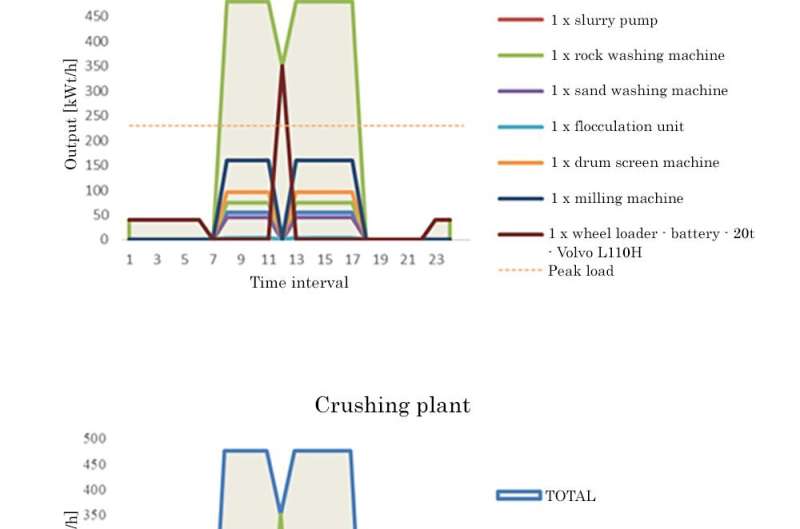This article has been reviewed according to Science X's editorial process and policies. Editors have highlighted the following attributes while ensuring the content's credibility:
fact-checked
trusted source
proofread
Electrifying construction sites outside built-up areas in Norway

The building and construction sector currently accounts for approximately 4.5% of Norway's greenhouse gas emissions. These emissions are derived mainly from fossil fuels used for transport and the operation of construction machinery.
If we switch to electric machinery, we will see lower levels of emissions, less noise and pollution, better air quality and, as a result, a better working environment.
To date, electric machinery has been tested on construction sites in Oslo, where there is otherwise good access to the grid.
SINTEF has carried out an assessment showing that, for the most part, electrification of these sites works very well despite challenges related to electricity supply and charging that may arise when several heavy machines are being used simultaneously.
One criterion for success is that the municipality involved stipulates clear requirements in relation to emissions-free building and construction sites, as is the case in Oslo. It is also prerequisite that there is adequate facility for the charging and operation of the machinery.
The experience obtained in Oslo is now to be applied to improve procurement requirements for Rogaland County Authority.
Aiming to electrify major construction sites with limited access to the grid
But how easy is it to make more remote construction sites entirely independent of fossil fuels? And what do we do to meet the needs of energy-demanding activities and heavy machinery?
"It is entirely possible to scale up the systems tested on the construction sites in Oslo, but meeting the energy requirements will require different approaches," says Marianne R. Kjendseth Wiik, who is a research scientist at SINTEF.
Kjendseth Wiik has been looking into the energy and output requirements of a site in Gjesdal municipality in Rogaland, which is planned to be operated entirely electrically. She has also evaluated the energy resources available in the vicinity.
Today, the Kluge industrial tip in Gjesdal in Rogaland is a regional center for the interim storage of rock waste from construction sites. The main activities taking place there include the recycling, crushing and transport of rock waste, which are very energy-demanding processes. When the site has been fully electrified, it has been calculated that the local grid will not have the capacity to meet peak load demand.
Renewable 'combination package'
An entirely emissions-free construction site requires a new energy system that meets both the overall energy requirements of the site and the output peaks that occur when several machines are in operation simultaneously. For this reason, researchers are looking into systems incorporating a combination of solar panels, batteries and hydrogen generators to provide supplementary electricity to power the machinery.
"All energy sources and energy carriers have their benefits and shortcomings," says Kjendseth Wiik. "Our challenge is to find out how the various technologies should be combined to achieve optimally efficient and profitable operations. There is also a need to facilitate efficient charging and operation of the machines," she says.
If everything goes according to plan, the first entirely electric machines will be undergoing tests at the Kluge site during 2024.















